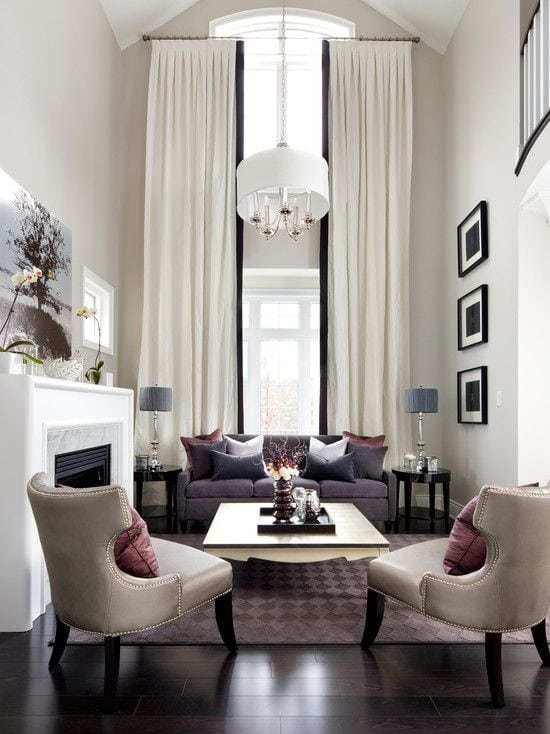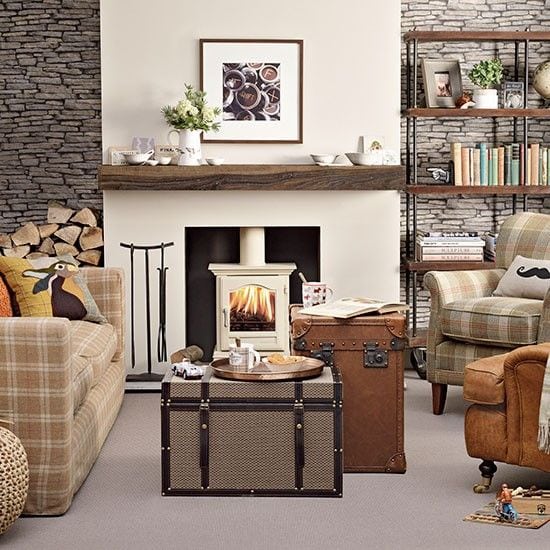
3 Hints to Decorate a Living Room with Richard Eastman

We sat down with Richard Eastman to learn how to decorate a living room?
What was your path to becoming a designer?
My mother’s friends loved the decorating I had done at our home, so at 15 years old I completed my first decorating job. I made $85 to decorate a living room. From then on, one friend or another hired me for work. After majoring in business and accounting in college, I worked for Tandy Corporation and was very successful. However, my heart was in interior design, so I opened my first studio in 1980 at the age of 25. I have loved my career all my life and feel very blessed to have found my calling in life.
Tell us your best advice for decorating a living room?
When I have a choice, I love to decorate living rooms that are very colorful, calm and nurturing. I love to blend timeless traditional case goods with soft contemporary upholstery. And artwork is a must. The key trick to decorate a living room is to take a wonderful piece of art and build a room around it. Or, another trick to decorate a living room, if a client has a truly amazing piece of furniture, I allow it to be the focal point of the room and design around it.
What is your favorite part of your day?
Growing up, I loved staying up till early hours of the morning creating. However, I now love the peacefulness of the morning. Now that I live in the country, I love to get up early and walk the property, see the new growth of my flowers, check on my outdoor pets and gently wake up to a whole new day.

c/o www.tophomeideas.com, Pinterest
Where and when are you most inspired?
I am not sure that I can actually identify where I get my inspiration, but it definitely has to do with nature. From the symmetry of the natural growth of plants and trees to the intricacies of human and animal anatomy, life inspires me.
How has your design philosophy changed since you began your practice?
When I first began my practice, I discounted my design ideas to just be able to work. What I realized is that people do not appreciate your work if they do not pay for it. Therefore, I started teaching interior design classes for adults on how to decorate a living room, bedroom, etc, in my studio in 1984 to give more people the opportunity to enjoy quality design. By teaching them the basics of “good design practices,” I was able to help them achieve their goals while being paid for my expertise. It was a win-win situation for both of us. I continue to teach and added art and pottery classes to my venue several years ago.
c/o Pinterest
What has been your most challenging/creatively rewarding project to date? Why?
The lobby of the worldwide headquarters for Baker Hughes in Houston. They had paid an architectural firm that had created a very sterile and boring environment. I proposed “branding” for them, to actually make a major statement to their clients as they entered the facility. To do so, I designed and implemented several strategies that truly left the CEO breathless. He told me, “Richard, you are a design genius”. I accomplished this by:
- Creating an established color scheme of blue and black.
- Using blue leather upholstery and black granite tables with polished chrome legs for the seating area.
- Added blue and black Venetian plaster on three accent walls to give the appearance of marble.
- Created chrome cutout logo for the wall behind the front desk, mounted on Venetian plaster.
- Designed and built a 15 feet by 5 feet glass sculpture of the world atlas with brushed chrome continents and islands. Then within the five inch wide, brushed chrome frame, I added high intensity fiber optics to light the whole piece even in the bright sunlight streaming through the front doors.
What is the most common design problem you encounter? Is there a simple fix you can suggest for this problem?
Many people watch HGTV and think they can build or create items they have seen on television. And when it is a disaster, they call me to fix it. Sometimes it is an easy fix, but many times it cannot be fixed or saved, which results in a total loss for the client. One common problem that I have seen many times happens with paint colors. It is difficult to visualize how a small chip of paint on a sample is going to look on the wall. Knowing how to fix the color is very, very important and many paint store professionals don’t really know how. For instance, pink for a girl’s bedroom is almost always difficult. When it is too bright, like Pepto Bismol, many people mistakenly add black. However, adding green, because it is the opposite of red on the color wheel, always yields the best results. It “muddies” the pink to make it more palatable and better for walls in a bedroom.
How would you describe your style? How does it translate to your work?
I love doing “period” work, but do not get asked to that very often. Most of the time, I would describe my design style as, “a dance between traditional and contemporary.” I love combining a touch of each so that it establishes the refinement of traditional case goods and the flair of contemporary upholstery and artwork. To me, it reflects conservative values with an artistic, “free-spirited” nature.
What has your experience been with decorating your own space? How is decorating for yourself different from decorating for other people?
I am able to use more color and dramatic neutrals like black. Most people love calm neutrals with a touch of color. I like color with a touch of dramatic neutrals.
What, in your opinion, makes a space feel homey?
A space has to have your favorite colors and your favorite decorative items, artwork and furniture. If you are a reader, having your favorite books close by and a nice comfy chair near a window for natural light is always a plus.
What is one element that can draw a room together when it feels like nothing goes together?
Artwork. Maybe I feel that way because I am an artist, but when the room needs a color scheme, or one element to bring the existing color scheme together, Artwork always works. It is also great to set the mood or the theme of a room as well.
